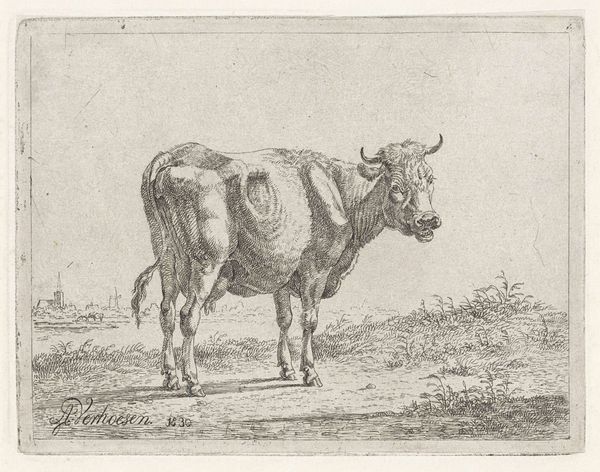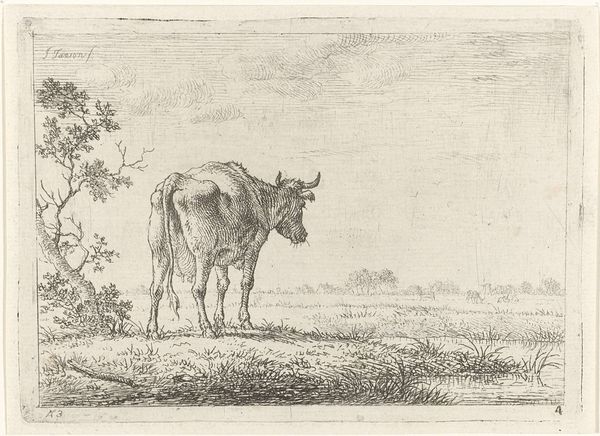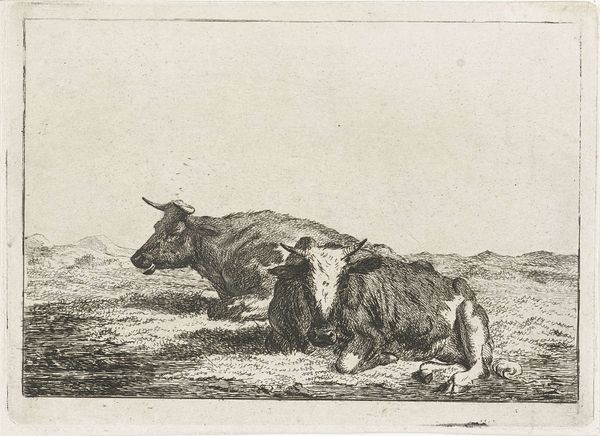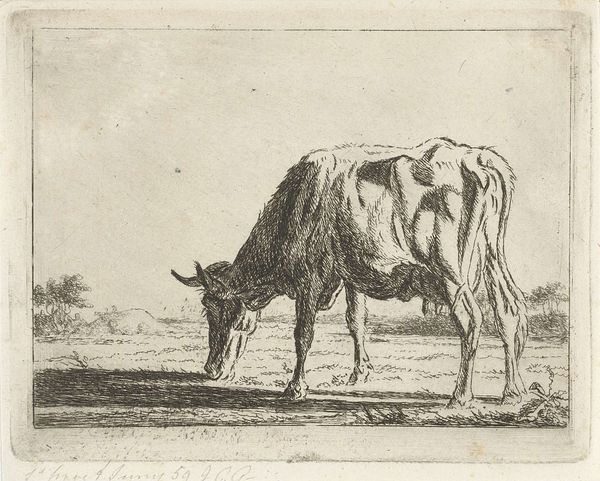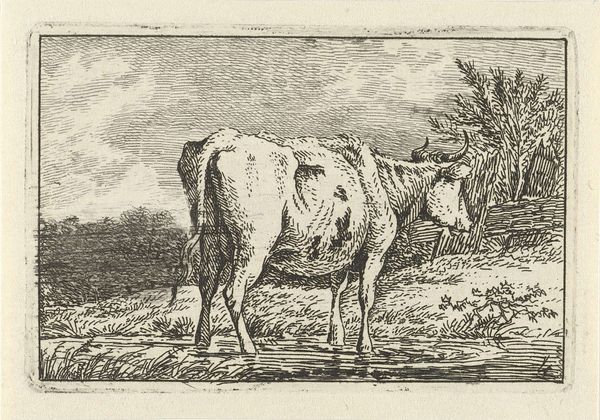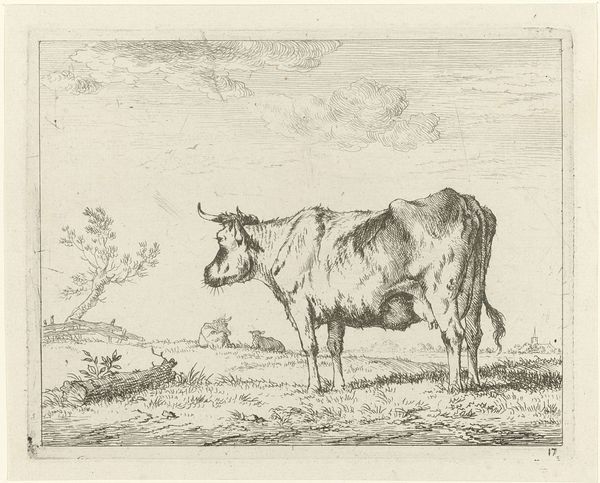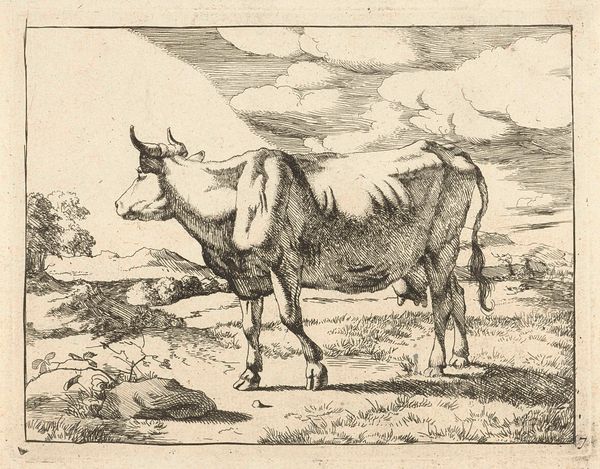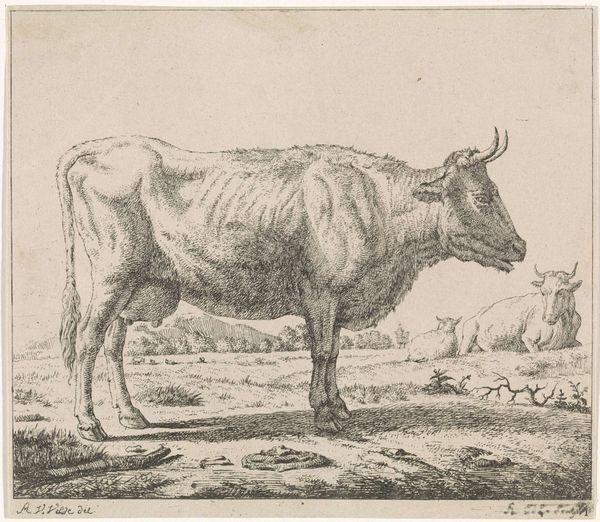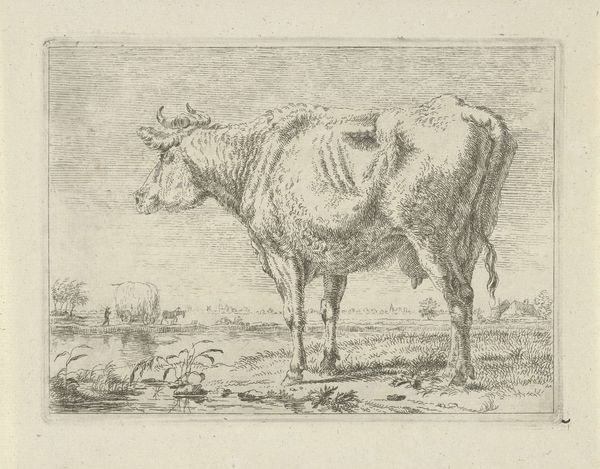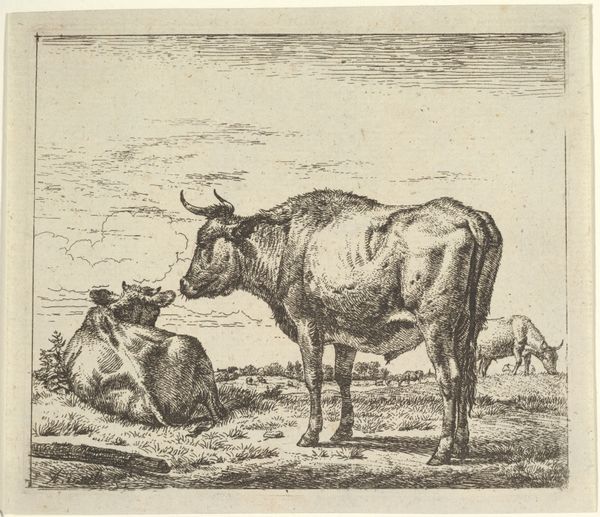
print, engraving
#
animal
#
dutch-golden-age
# print
#
landscape
#
engraving
#
realism
Dimensions: height 166 mm, width 239 mm
Copyright: Rijks Museum: Open Domain
Curator: This engraving by Pieter Gerardus van Os, created between 1791 and 1839, is titled "Grazende Koe," or "Grazing Cow." It resides here at the Rijksmuseum. Editor: It strikes me as serene, almost bucolic. The texture achieved in the sky and the cow’s coat with just line work is quite remarkable. Curator: Indeed. We can view it within a lineage of Dutch landscape art deeply connected to notions of land ownership, agricultural production, and evolving class structures. How are depictions of labor linked to political power? This work engages in that discourse, especially if we consider land enclosures impacting animal husbandry, or the transformation of the feudal systems. Editor: And structurally, look how the artist balances the mass of the animal with the expansive sky, the curve of the cow echoing the forms of the clouds. Semiotically, this harmony reads as a celebration of the natural order, an ordered existence. Curator: I would push further. This 'natural order' is in fact socially constructed and loaded with ideology. By presenting a seemingly untouched landscape, it obscures issues surrounding ecological changes due to increased animal farming practices. Van Os romanticizes this activity, ignoring the underlying implications for environment, ownership, and social justice. Editor: Perhaps. Yet the realism with which the cow is depicted– its musculature, the slight sag of its belly, suggests an observational intent, the artist diligently translating from reality rather than purely idealizing. Curator: That is very true. And as this was made available as a print, the visual vocabulary employed here speaks directly to the democratization of art. The potential of distributing landscape visuals widely across classes impacts a culture’s understanding of belonging and ownership, no? This may reveal a sense of cultural and social identity at the cusp of radical sociopolitical shifts. Editor: Interesting thought! It certainly complicates my initial feeling of serenity. The artist makes deliberate formal decisions but exists within a shifting matrix of social relationships. Curator: Exactly. The convergence of aesthetic form and lived experience gives art its staying power, its relevance. Editor: Precisely!
Comments
No comments
Be the first to comment and join the conversation on the ultimate creative platform.
